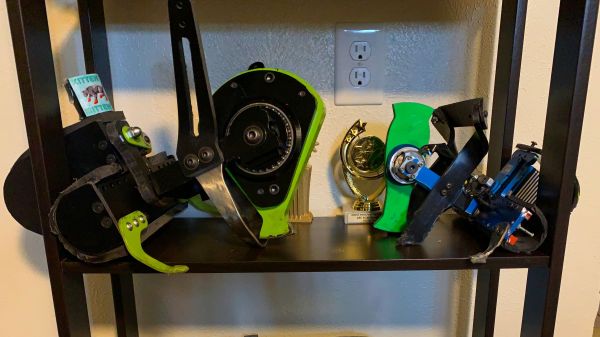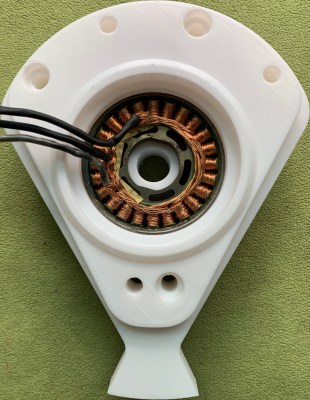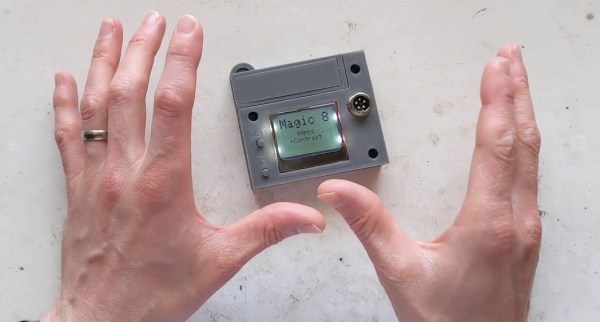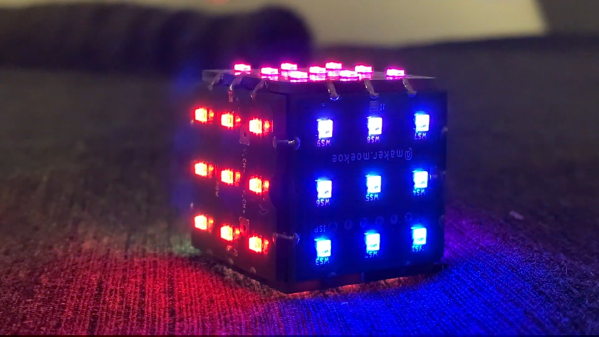For better or worse, a lot of human technology is confined to fewer dimensions than the three we can theoretically move about in. Cars and trains only travel two dimensionally with limited exceptions, maps and books generally don’t take advantage of a third dimension, and most computer displays and even the chips that make them work are largely two-dimensional in nature. Most styles of cooking can only apply heat in a single dimension as well, but [Dane Kouttron] wanted to make sure the meat his cookouts took advantage of a truly three-dimensional cooking style by adding a gyroscopic mechanism to the spit.
The first thing that needed to be built were a series of concentric rings for each of the three axes of rotation. Metal tubes were shaped with a pipe bender and then welded into their final forms, with an annealing step to flatten the loops. From there, the rings are attached to each other with a series of offset bearings. The outer tube is mounted above the fire and a single motor spins this tube. Since no piece of meat is perfectly symmetrical (and could be offset on the interior ring a bit even if it were) enough chaos is introduced to the system that the meat is free to rotate in any direction, change direction at any time, and overall get cooked in a more uniform way than a traditional single-dimensional rotating spit.
As a proof of concept [Dane] hosted a cookout and made “gyro” sandwiches (even though the machine may technically be more akin to a gimbal), complete with small Greek flag decorative garnishes. It seems to have been a tremendous success as well. There are a few other novel ways we’ve seen of cooking food over the years, including projects that cook with plasma and much more widely available methods that cook food efficiently using magnets, of a sort.




















